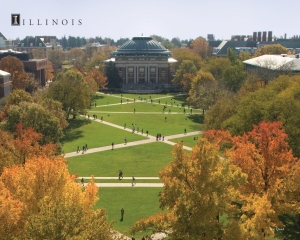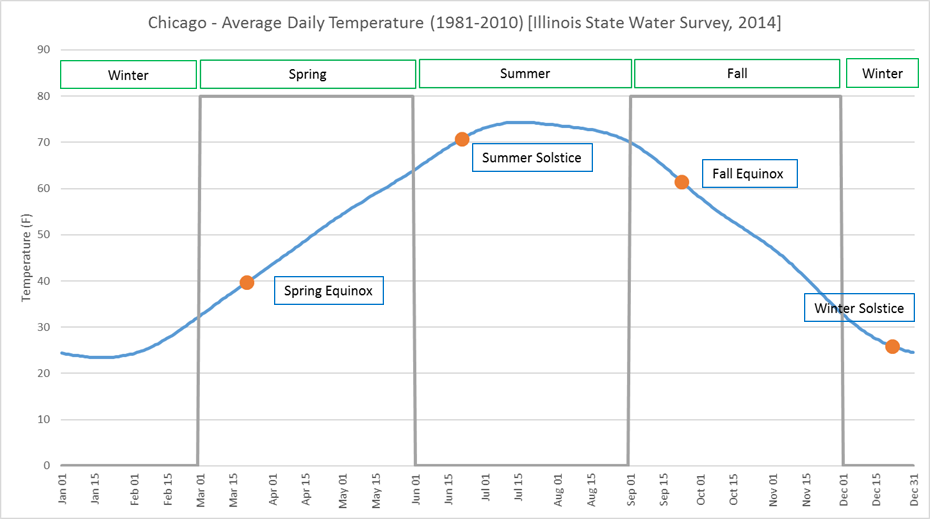
No doubt today (September 22) will be announced as the “first day of fall” because of the fall or autumnal equinox. However, that concept refers to the date when we get equal amounts of daylight and dark. I don’t think it was ever intended that this astronomical event would be the start of fall. In fact, this equinox would be the start of spring in the southern hemisphere. So to be fair to everyone we should call it the September equinox and leave fall out of it. 😉
Climatologists and meteorologists prefer to use calendar months to define the four seasons in the US. For example, fall would start September 1 and end on November 30. Not only is this more convenient, because you can use monthly data, but it lines up better with the typical or average temperature pattern for Illinois. Unfortunately, the meteorologists would describe this three-month period as “meteorological fall”. However, I would argue it is “climatological fall” since we are looking at long-term average to determine the season.
Here are the normal, or average, daily temperatures for Chicago O’Hare Airport for each day of the year (blue line). The four astronomical events are marked with orange dots. Also I have blocked off the three-month periods for the climatological seasons with the gray lines and green boxes.
The differences between astronomical and climatological seasons can be seen best in summer. While the “climatological summer” boundary of June 1 to August 31 nicely covers the warmest part of the year, the summer solstice actually come about 3 weeks too late. The same is true with winter – the December 1 to February 28 boundary better captures the coldest time of year, on average.
In fact, if we use the summer solstice and the fall equinox as the boundaries for summer, then the beginning of summer is about 10 degrees warmer than the end of summer. The same is true in winter. So it is 3 weeks too late and leads to an off-balanced winter and summer season.
In summary, while the four equinox and solstice events are interesting, they are not really the best way to define the start of seasons in Illinois. Starting dates of March 1 for spring, June 1 for summer, September 1 for fall, and December 1 for winter are better aligned with the climatological data.



Amazing post Jim. Being at UIUC, Nalin would find this extremely insightful.